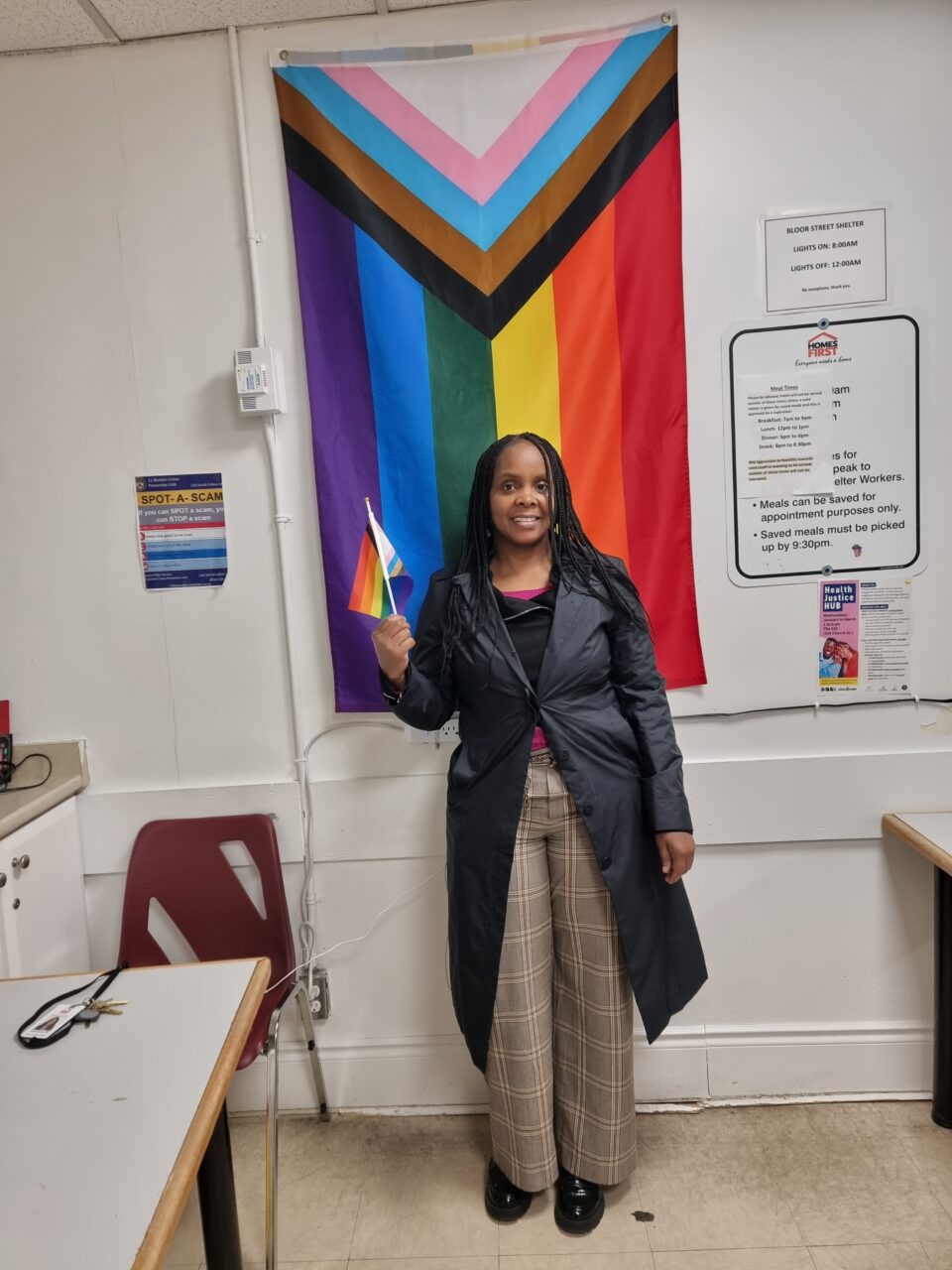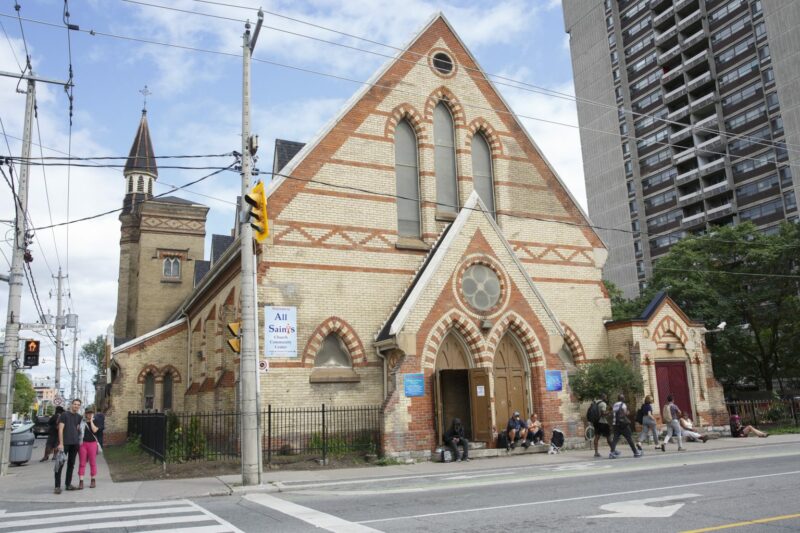In partnership with the 519 Community Centre, Homes First operates Pacewood Shelter, which currently supports 20 refugee clients who self-identify as members of 2SLGBTQIA+ communities. These communities have historically faced systemic discrimination against varying identities including gender expression and sexual orientation. These barriers are then compounded by further discrimination of refugees, often including issues of classism, racism and ableism. This intersecting discrimination poses significant challenges for members of 2SLGBTQIA+ communities to secure housing.
Veronica M., a Housing Help Worker at Pacewood shares her experience supporting 2SLGBTQIA+ clients in search of safe, supporting housing.

Access to Social Services and Resources
Veronica elaborates that clients of Pacewood encounter challenges in accessing social services and resources geared towards 2SLGBTQIA+ communities. While social support networks and “stigma-free” programs exist, waitlists remain long, and in some cases, staff at certain organizations are still unwelcoming. The access of health services presents unique challenges, as there are few available family doctors, necessitating recourse to clinics that accept new clients without OHIP. In both scenarios, waiting lists remain long even after obtaining an OHIP card or acknowledgment of a claim number. However, Veronica reports that clients have an easier time seeking out English as a Second Language Training (ESL).
Migration Experiences and Concerns
Veronica highlights her clients’ fears and worries upon arriving in Canada. In her many conversations with Pacewood residents, they share their thoughts of worry about transitioning into a new society, immigration hearings, financial stability, and possible rejection from potential Landlords. Despite all the odds, Veronica’s clients remain hopeful that she and her other Homes First counterparts will help facilitate connections with non-discriminatory landlords.
Housing Search and Systemic Barriers
Veronica outlines her approach to supporting Pacewood clients in search of housing options:
- Veronica prepares her list of prospects: She looks through databases of available units and conducts other searches online. She also works within sensitized or educated anti-oppressive community networks to identify units, neighbourhoods, and lists of landlords suitable to the unique intersecting challenges facing refugee clients’ members of 2SLGBTQIA+ communities.
- Veronica conducts detailed research on her list of prospects: This step includes contacting and interviewing potential landlords, connecting with other housing providers and visiting potential units themselves. This step is always ongoing to ensure she has a fulsome snapshot of available and appropriate housing inventory for her clients.
- Understanding clients’ needs: This step happens simultaneously with the one prior, as Homes First is a client-centric organization. At this stage, Veronica holds numerous meetings with clients to understand their likes and dislikes, housing goals and unit priorities. Here, she will also make note of her clients’ income sources.
- Liaising with a potential match: Veronica then reaches out to landlords whom she believes have units that would be a good fit for her clients from a financial standpoint, built form, and access to necessary supports.
However, despite these well-informed efforts, Veronica has still encountered instances when landlords exhibit biases and withdraw offers, even after a Promise of Address has been signed.
Thoughts on Housing Policy Change
Veronica believes in equal access to housing for all individuals and emphasizes the necessity of more inclusive support networks. She believes that this can only be attained by increased awareness around challenges facing vulnerable communities and subsequent policy changes. Veronica also believes, based on her firsthand witness and knowledge of the market, more housing options specifically for transgender identifying folks are needed. Noting that change takes time and given the current housing crisis, Veronica emphasizes the importance of self-advocacy and knowledge of provincial laws that affect tenants.
Advocacy and Education
Finally, Veronica urges everyone engaged in social justice work to educate themselves on the challenges facing 2SLGBTQIA+ communities, and continue to respect pronouns, uphold client confidentiality and consent. To further one’s knowledge, Veronica encourages individuals to sign up for training at the 519 Community Centre. That way we are all more informed when advocating for the rights and well-being of 2SLGBTQIA+ individuals.
Click here to learn more about discrimination and systemic racism in Ontario’s rental market:
Ontario rental market laden with systemic racism: report (citynews.ca)


